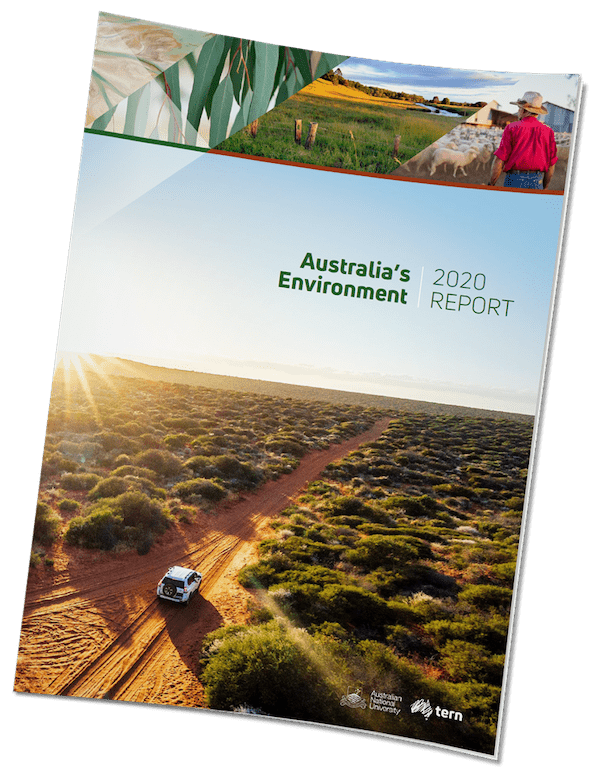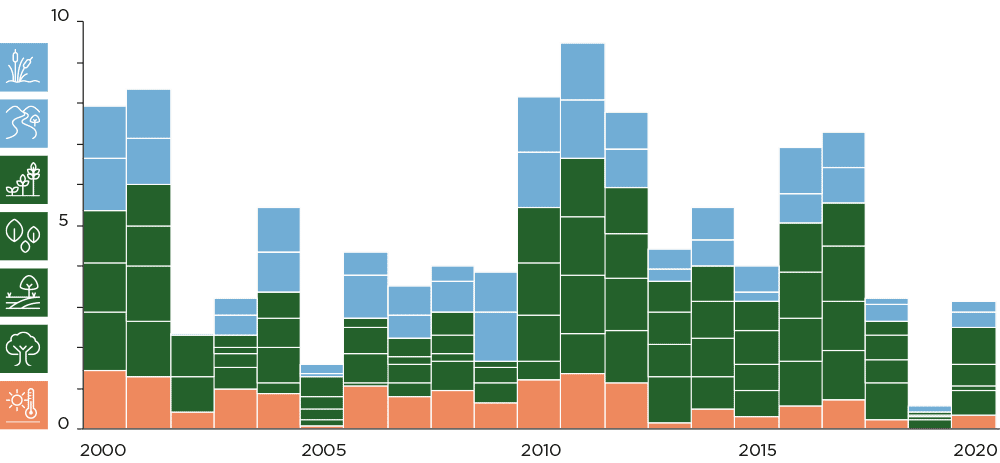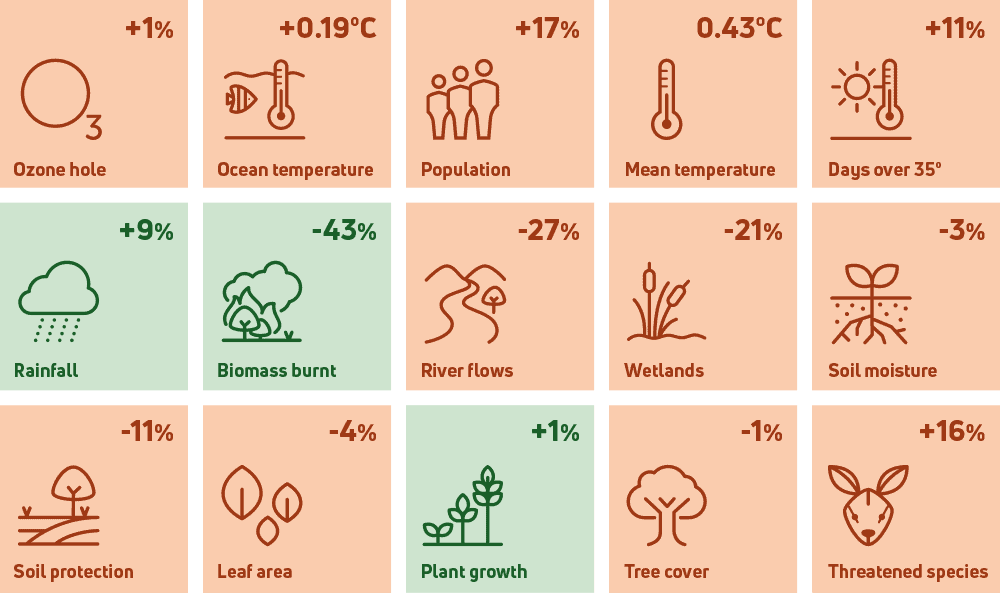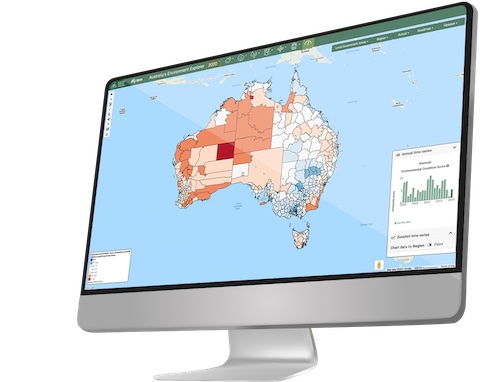Improved rainfall conditions have pulled our environment out of its worst state on record, but recovery is slow, partial and precarious. That’s the main conclusion from Australia’s Environment, the latest in an annual series of environmental condition reports, released on Wednesday 31 March 2021. The report, and its website, provide a summary of key environmental indicators and how they changed in 2020.
Produced each calendar year by the Australian National University Centre for Water and Landscape Dynamics (ANU WALD) with support from TERN, the report of Australia’s Environment provides summaries of key events, environmental conditions and change during 2020.
It documents the environment’s resilience to the extreme drought, heat and damage to our natural capital that was reported in 2019. Nationally, Australia’s environmental condition score increased by 2.6 points in 2020, from an extremely low 0.8 out of 10 in 2019, to a still very low score of 3.2.
Australia’s National Environmental Condition Score and its components for 2000–2020 (credit: http://www.ausenv.online)
Slow and steady recovery, but much room for improvement
ANU’s Professor Albert van Dijk leads the work and says that this year’s report is a mixed bag of good- and bad-news stories, but one which has an overall trend of slow and steady environmental improvement.
“Improved rainfall across Australia—around 10% above the average for the previous two decades—replenished dry soils and growth conditions in both natural and managed landscapes were the best in several years.
The rain was even enough in eastern states to make some rivers flow again, refill near-empty water storages and avoid major algal blooms and fish kills.”
Professor Albert van Dijk, Australian National University
Unfortunately, however, new data also show that conditions are still very poor across large swathes of the country.
For example, drought conditions persisted across areas of inland northern and western Australia where growth conditions were the worst in decades in some remote areas. Also, there was another mass bleaching event in the Great Barrier Reef, and another 15 species were added to the country’s Threatened Species List in 2020.
Indicators of Australia’s environment in 2020 compared with the average for 2000-2019. Similar to national economic indicators, they provide a summary but also hide regional variations, complex interactions and long-term context (credit: http://www.ausenv.online)
Long-term data on the state of our environment
The report, data explorer and website are created by ANU WALD by analysing vast amounts of long-term measurements from satellites and on-ground stations using algorithms and prediction models on a supercomputer, including many delivered by NCRIS-enabled projects, including TERN.
Of particular importance to the analysis are long-term time-series data. These datasets allow patterns of change in Australia’s ecosystems to be assessed, which is critical to understanding and managing our environment.
TERN sensors operated 24/7 throughout 2020—including pandemic lock-down periods—and for the past decade provided those conducting ecosystem research, like Prof. van Dijk, with unique data from across the continent.
The algorithms and models use the open data to summarise 15 key environmental indicators. From these 15 indicators, seven were used to calculate an overall Environmental Condition Score (ECS)—3.2 out of 10 in 2020—to allow analysis as to how they have changed over time for any region in Australia. They include indicators of weather, water availability and soil and vegetation condition.
Report cards can be downloaded for any administrative or geographic region of Australia, including local government areas, electorates and bioregions, for example.
“The largest improvements occurred in NSW and Victoria thanks to good rains, reaching above average conditions. The poorest conditions occurred in Northern Territory and Western Australia where there was little solace from continued dry conditions.
Comparing local government areas, the best conditions occurred in Nillubik Shire on the northern edge of Melbourne. In contrast, the worst conditions occurred in Katherine in Northern Territory and in the Shire of Ngaanyatjarraku in remote WA, which so far, have both received too little rain to recover from the 2019 drought.”
Professor Albert van Dijk, Australian National University
Environmental Condition Score (ECS) by State and Territory and change from the previous year (credit: http://www.ausenv.online)
Continued environmental recovery likely in 2021
The prognosis for further recovery in 2021 is good, says Prof. van Dijk.
“Rainfall in 2021 so far has been pretty good and the Bureau of Meteorology is expecting good rains for at least another few months.
Taken together, there is reason to hope that our environment will get a chance to continue its recovery from a horrendous 2019.”
Prof. Albert van Dijk, Australian National University
TERN is committed to tracking environmental change over the coming months and years to enable ongoing analyses and improved understanding of terrestrial ecosystem function and resilience.
A multi-year collaboration between TERN and ANU will ensure the continuation of the Australia’s Environment analyses into the future.












